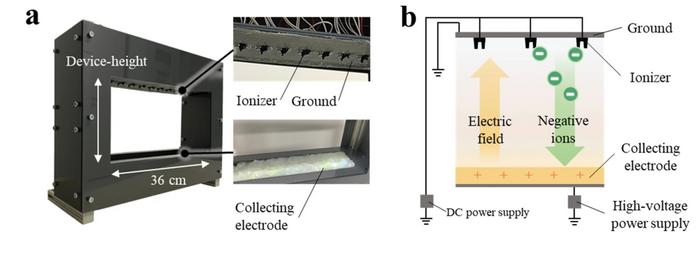
NASA’s OSIRIS‑REx mission has ushered in a new era in our understanding of prebiotic chemistry and the dynamic nature of small Solar System bodies by returning pristine samples from the near‑Earth asteroid Bennu. In a groundbreaking development that challenges long‑standing assumptions regarding the origins of life on our planet, researchers have discovered that Bennu’s fragments contain all five nucleobases essential for the formation of DNA and RNA, as well as fourteen of the twenty amino acids known to comprise terrestrial proteins. These findings not only underscore the richness of organic compounds available in extraterrestrial environments but also call into question the mechanisms by which biological homochirality—the predominance of one chiral form over another—was established on Earth.
The samples, collected by the OSIRIS‑REx spacecraft during its historic 2020 rendezvous with Bennu and delivered to Earth in 2023, were obtained in an extraordinarily pristine state. Unlike meteorites that experience high‑temperature heating during atmospheric entry and are subsequently contaminated by terrestrial organic compounds, these Bennu specimens were retrieved in a sealed canister and maintained under inert gas conditions throughout the return process. This rigorous contamination‑avoidance protocol has provided scientists with material that is as close as possible to its original extraterrestrial state, thereby offering an unprecedented glimpse into the chemical inventory of early Solar System bodies.
A particularly striking discovery in these samples is the nearly equal representation of left‑handed and right‑handed amino acids. Terrestrial life, by contrast, exhibits a marked preference for left‑handed amino acids, a phenomenon known as homochirality that is critical for the proper functioning of biological macromolecules. The unexpected enantiomeric parity in Bennu’s amino acids challenges the long‑held hypothesis that extraterrestrial organic matter delivered to the early Earth would inherently mirror the chiral asymmetry observed in living systems. This revelation forces a reassessment of current models of prebiotic chemical evolution and suggests that the selective amplification of one enantiomer over its mirror image may have occurred after the initial delivery of organic compounds to our planet, potentially as a result of localized environmental influences or subsequent chemical evolution on Earth.
In addition to its suite of organic molecules, Bennu’s sample reveals an unexpected diversity in its mineralogical composition, particularly the presence of salt minerals that are believed to have formed billions of years ago. Among these, researchers identified crystalline sodium carbonate needles—structures that are emblematic of ancient brine‑filled environments. The formation of these salt deposits is most plausibly explained by the evaporation of water from aqueous ponds on Bennu’s parent asteroid, leaving behind mineral crusts that now serve as a geological record of past aqueous activity. The coexistence of these salt minerals with carbon‑rich molecules such as formaldehyde lends strong support to the notion that transient aqueous environments on small bodies may have provided the chemical milieu necessary for synthesizing more complex organic molecules.
The implications of these discoveries are profound. The presence of all five nucleobases and a substantial number of amino acids in Bennu’s samples provides compelling evidence that the chemical precursors to life are not unique to Earth but are instead widespread in the cosmos. Yet, the chiral balance of amino acids presents a paradox: if the extraterrestrial delivery of organic compounds was a primary driver of prebiotic chemistry on early Earth, why then does terrestrial biochemistry exhibit such a pronounced chiral bias? One possibility is that while asteroids like Bennu contributed a diverse set of organic molecules, subsequent processes on Earth—such as interactions with mineral surfaces, exposure to circularly polarized light, or other localized physicochemical effects—may have selectively enhanced one enantiomer over the other. This paradigm shift necessitates an integration of extraterrestrial chemistry with terrestrial processes in our models of the origin of life.
The OSIRIS‑REx mission itself represents a pinnacle of technological and scientific achievement. Launched in 2016, the spacecraft navigated the challenges of deep‑space travel and the microgravity environment of a small asteroid to perform an extraordinarily delicate sample‑collection maneuver. The successful acquisition of approximately 120 grams of material from Bennu marks the largest asteroid sample return to date, dwarfing previous efforts by missions such as Japan’s Hayabusa series, which collected only a few grams from their target bodies. This abundance of material has enabled a multifaceted analytical approach, employing advanced techniques such as high‑resolution mass spectrometry, scanning electron microscopy, and cryogenic spectroscopy to interrogate the samples at molecular and atomic levels.
The analytical investigations have not only confirmed the presence of key prebiotic molecules but also revealed a complex interplay between organic compounds and the mineral matrix in which they are embedded. Detailed spectroscopic analysis under controlled laboratory conditions has enabled researchers to determine the isotopic compositions, molecular structures, and enantiomeric ratios of the organic constituents with unprecedented precision. Such rigorous analysis is critical, as even minute contamination or alteration of the samples could obscure the subtle chemical signatures that encode information about the conditions in the early Solar System. By preserving the integrity of these ancient materials, the OSIRIS‑REx mission has provided a rare opportunity to study a chemical record that has remained largely unaltered for billions of years.
The discovery of diverse salt minerals within Bennu’s samples adds an important dimension to our understanding of the asteroid’s history. These minerals, formed through evaporative processes in ancient brine pools, suggest that Bennu’s parent body once harbored liquid water—a condition that is generally associated with habitable environments. While no direct evidence of life has been found on Bennu, the coexistence of water‑related minerals and complex organic molecules is a tantalizing hint that the conditions necessary for life’s emergence might have been more common in the early Solar System than previously believed. The chemical interactions between water, salts, and organic compounds create a conducive environment for prebiotic reactions, which may ultimately lead to the synthesis of more complex biomolecules.
This intersection of organic chemistry and mineralogy has far‑reaching implications for planetary science and astrobiology. For decades, scientists have hypothesized that asteroids and other small bodies could have been significant contributors to the delivery of life’s building blocks to the early Earth. The comprehensive suite of compounds identified in Bennu’s samples—including carbon‑rich molecules, nitrogen‑bearing compounds, and ammonia—supports this hypothesis and reinforces the idea that the ingredients for life are distributed widely throughout the Solar System. The sheer chemical diversity observed in Bennu stands in stark contrast to the simpler compositions typically found in meteorites, indicating that some asteroids may have been far more chemically active than their inert appearance might suggest.
The broader ramifications of these findings extend into the realm of astrobiology, where they compel researchers to revisit and refine the criteria used to assess the habitability of extraterrestrial environments. Traditionally, the search for life beyond Earth has been guided by the concept of the “Goldilocks zone”—the range of distances from a star within which liquid water can exist. However, the discoveries made on Bennu suggest that the presence of water and complex organic molecules is not confined solely to this narrow band around a star. Instead, even small, seemingly unremarkable objects such as asteroids can host dynamic chemical environments that may have been instrumental in the genesis of life. This recognition broadens the scope of astrobiological inquiry, inviting scientists to consider a wider array of celestial bodies as potential cradles of prebiotic chemistry.
The intricate chemical tapestry unveiled by the Bennu samples also provides a window into the early history of the Solar System. The early solar nebula was a volatile and chemically active environment, and the accretion of asteroids like Bennu involved a myriad of physical and chemical processes that influenced their eventual composition. The fact that Bennu retains such a diverse and complex suite of organic and inorganic compounds suggests that the processes responsible for chemical differentiation were both efficient and widespread. The preservation of these compounds over billions of years attests to the remarkable stability of certain molecular structures under the harsh conditions of space, offering valuable insights into the resilience of prebiotic molecules in the face of cosmic radiation and thermal fluctuations.
Interdisciplinary collaboration has been a hallmark of the research conducted on Bennu’s samples. Experts from planetary science, organic chemistry, mineralogy, and astrobiology have come together to synthesize a comprehensive picture of the asteroid’s history and its potential role in the broader context of life’s origins. This convergence of diverse scientific perspectives is essential for tackling the multifaceted questions posed by the Bennu findings. For instance, the unexpected balance in amino acid chirality not only has implications for our understanding of molecular biology but also raises fundamental questions about the processes that govern chemical evolution in the absence of biological influences. By integrating experimental data with theoretical models, researchers are now better equipped to explore how subtle environmental factors—ranging from mineral surface interactions to the influence of circularly polarized light—may have driven the selection and amplification of one chiral form over another.
The scientific community has greeted the Bennu discoveries with both excitement and a measured sense of caution. Astrobiologists like Daniel Glavin from NASA’s Goddard Space Flight Center have expressed initial disappointment upon encountering the enantiomeric symmetry in the amino acids, as it appeared to contradict decades of research predicated on the expectation of a chiral bias inherited from extraterrestrial sources. However, this very contradiction is now viewed as an opportunity—a catalyst for reexamining established theories and exploring new avenues of research. Such unexpected results are emblematic of the exploratory nature of scientific inquiry, reminding us that the pursuit of knowledge often involves confronting and reassessing long‑held assumptions.
The legacy of the OSIRIS‑REx mission is not limited solely to its scientific discoveries; it also represents a milestone in the evolution of space exploration and sample‑return technology. The mission’s success in retrieving a substantial and uncontaminated sample from Bennu sets a new benchmark for future endeavors aimed at probing the organic and mineralogical composition of other celestial bodies. The technological innovations and methodological advances developed during this mission will undoubtedly inform the design and execution of future sample‑return missions, whether the targets are asteroids, comets, or even the icy moons orbiting the giant planets in our Solar System. In this regard, Bennu serves as both a scientific and a technological touchstone, illustrating the profound impact that well‑executed space missions can have on our understanding of the cosmos.
Moreover, the implications of these findings resonate with fundamental questions regarding the distribution of life in the universe. The detection of key prebiotic molecules in a pristine extraterrestrial context reinforces the idea that the chemical ingredients necessary for life may be ubiquitous, scattered throughout the cosmos on objects ranging from asteroids to comets. This possibility not only bolsters the hypothesis that life on Earth may have been seeded, at least in part, by the delivery of extraterrestrial organic material but also raises intriguing questions about the potential for life to arise independently in other planetary systems. The chemical universality observed in Bennu’s samples thus adds a new dimension to our understanding of life’s cosmic potential, suggesting that the processes that led to the emergence of life on Earth may be replicated in environments far removed from our own.
The chemical and mineralogical complexity of Bennu also offers valuable insights into the early Solar System’s history. The diverse suite of compounds preserved within these ancient rocks reflects a period of intense chemical evolution, during which the interplay of physical processes and chemical reactions set the stage for the eventual emergence of habitable environments. The fact that such complexity can be preserved in a small, seemingly inconsequential asteroid is a testament to the resilience of prebiotic molecules and highlights the intricate connections between geochemistry and biology. As ongoing analyses continue to extract detailed information from Bennu’s samples, researchers anticipate that additional surprises may yet be in store—each one contributing further to our understanding of the processes that have shaped the chemical evolution of our cosmic neighborhood.
In light of these discoveries, the scientific community is now poised to embark on a new phase of research that will delve deeper into the mechanisms of chiral selection, the role of aqueous processes in organic synthesis, and the broader implications of extraterrestrial contributions to Earth’s prebiotic inventory. Future studies will likely explore the catalytic properties of mineral surfaces, the influence of environmental conditions on reaction pathways, and the potential for similar chemical processes to occur on other small bodies within the Solar System. Such research is critical not only for unraveling the origins of life on our own planet but also for assessing the broader potential for life elsewhere in the universe.
The OSIRIS‑REx mission and its subsequent analysis of Bennu’s samples thus stand as a monumental achievement in both planetary science and astrobiology. By returning pristine fragments that contain a veritable treasure trove of prebiotic compounds and ancient minerals, this mission has provided us with an unparalleled window into the chemical evolution of the early Solar System. The data obtained challenge existing models, provoke new questions, and inspire a reimagining of the pathways through which life’s building blocks are synthesized and distributed across the cosmos. As research continues and new analytical techniques are developed, the legacy of the Bennu samples will undoubtedly influence our understanding of the origins of life for decades to come.
Moreover, these discoveries underscore the inherent dynamism of the Solar System’s small bodies. Far from being inert remnants of a bygone era, asteroids like Bennu are now recognized as active participants in the chemical evolution that underpins planetary formation and the emergence of life. The intricate interplay between organic molecules, mineral phases, and ancient aqueous environments recorded in these samples is a vivid reminder that even the smallest bodies in our cosmic neighborhood can hold clues to some of the most profound questions in science. In this light, the OSIRIS‑REx mission not only represents a triumph of human ingenuity and technological prowess but also serves as a beacon for future exploratory endeavors aimed at unraveling the mysteries of our universe.
In conclusion, the pristine samples retrieved from asteroid Bennu have provided the scientific community with an extraordinary opportunity to explore the fundamental building blocks of life in an extraterrestrial context. The comprehensive analysis of these materials—encompassing both organic molecules and ancient salt minerals—has yielded findings that challenge prevailing paradigms while simultaneously opening new avenues for research into the origins of life. The discovery of all five nucleobases, the substantial inventory of amino acids with an unexpected chiral balance, and the evidence for ancient brine activity collectively paint a picture of a chemically vibrant early Solar System. As scientists continue to decipher the complex history encoded within these fragments, the lessons learned from Bennu will undoubtedly inform and inspire future investigations into the processes that have shaped the emergence and evolution of life across the cosmos.
Subject of Research: Astrobiology, prebiotic chemistry, and the mineralogical and organic composition of asteroid Bennu
Article Title : Pristine Organic Compounds and Salty Vestiges on Bennu: OSIRIS‑REx Reveals Unexpected Prebiotic Chemistry
Article Doi References : https://doi.org/10.1038/d41586-025-00264-3
Image Credits : Scienmag
Keywords : Bennu, OSIRIS‑REx, asteroid, organic compounds, nucleobases, amino acids, chirality, salt minerals, brine, astrobiology, prebiotic chemistry, Solar System, planetary science
Tags: Bennu asteroid samplesbiological homochirality mechanismsdual-chirality amino acidsextraterrestrial organic compoundsimpact of asteroid research on life originsNASA OSIRIS-REx missionnucleobases in extraterrestrial environmentsorigins of life researchprebiotic chemistry discoveriespristine sample collection techniquesscientific implications of Bennu findingssignificance of amino acids in proteins








No Comments
Leave a comment Cancel